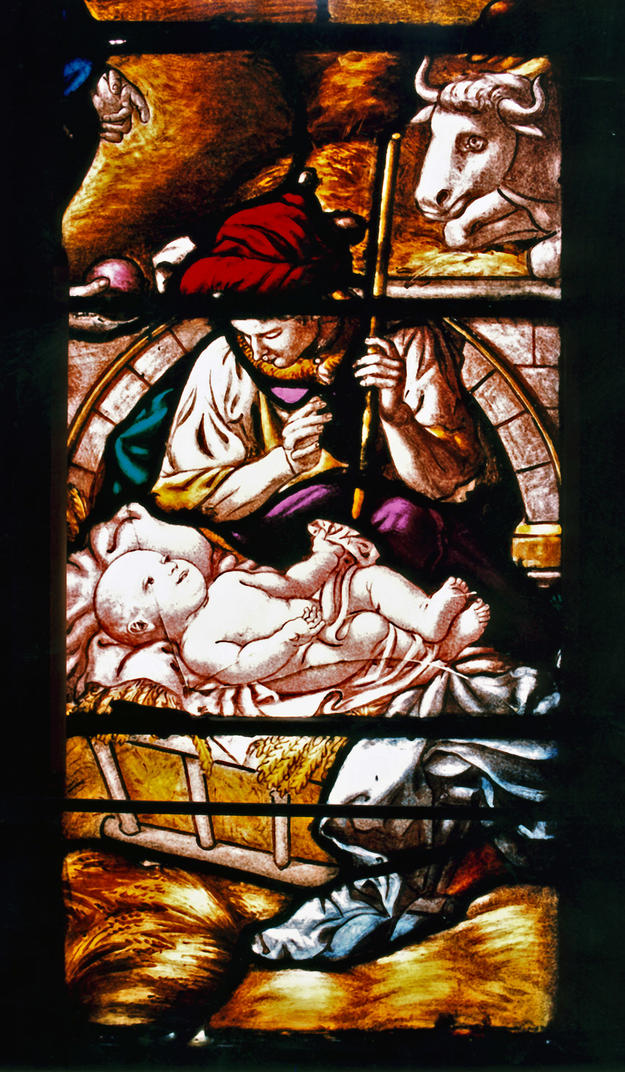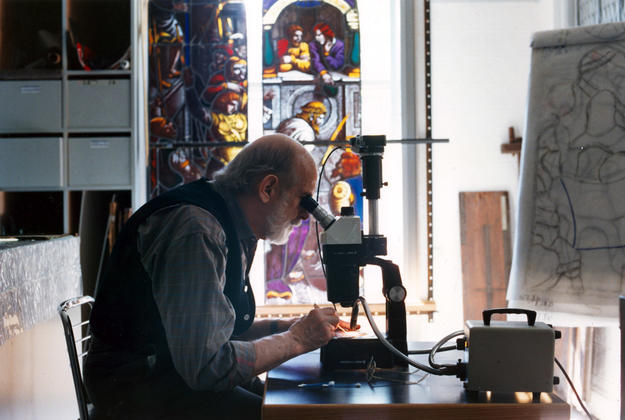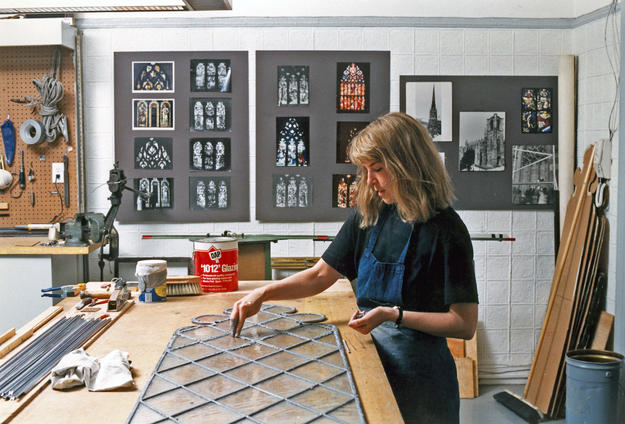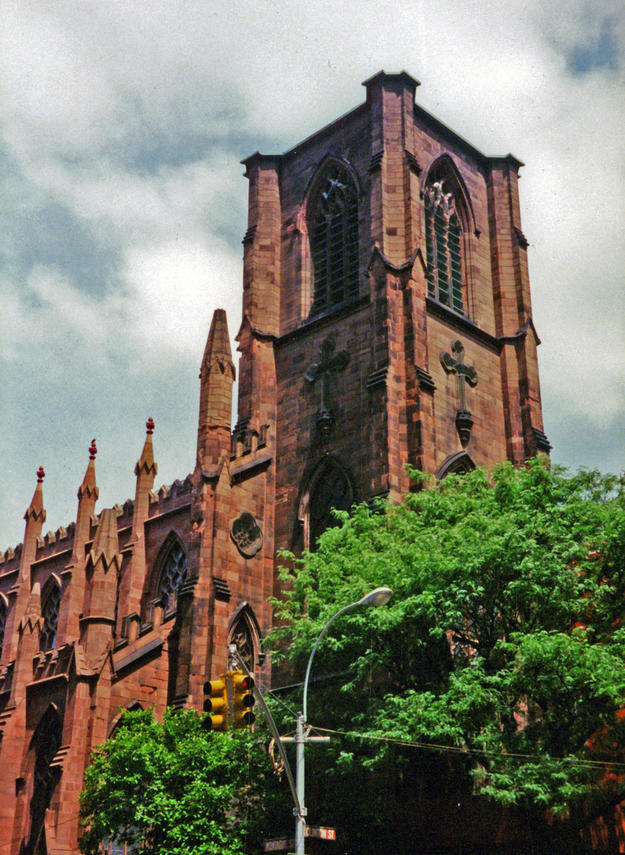The Church of St. Ann and the Holy Trinity is one of the most important monuments of the Gothic Revival in the United States and the crowning achievement of the highly influential nineteenth-century architect Minard Lafever (1798-1854). The church’s stained glass windows are considered a national treasure. Construction of the church between 1844 and 1847 was financed by the wealthy Brooklyn merchant Edgar Bartow, who intended it to be an expression of the importance of Brooklyn as a religious, cultural, and economic center. In the interior of the graciously proportioned sandstone sanctuary, a soaring nave is finished with a vaulted plaster ceiling and enveloped in 7,000-square-feet of stained glass set in flamboyant wood tracery. The creator of the windows, William Jay Bolton, pioneered the arts of stained glass design and manufacture in the United States, and the 60 windows that he designed for the church are of outstanding historical significance.
The parish thrived for 100 years, but after the departure of a charismatic rector of 45 years in 1949, a difficult period for the congregation ensued, leading to the closing of the church for more than a decade. When it reopened in 1969, the complex problem of repairing a large building with complicated needs, after a long period of deferred maintenance and neglect had to be addressed. A campaign was launched in 1979 for the complicated and costly task of restoring the church and its endangered stained glass windows.
A program combining conservation work with training opportunities
We joined the project in 1988 to address both the physical deterioration of the church and the steady decline in the number of skilled crafts workers in New York. In collaboration with the St. Ann’s Center for Restoration and the Arts, we developed a program combining conservation work with training opportunities for stained glass conservation, brownstone repair, and preservation craft skills. A stained glass conservation studio was established at the church, to transform the restoration activity from an intermittent undertaking to a long-term project. In 1992, we organized a French-American exchange program aimed at the transfer of information between the Church of St. Ann and the Holy Trinity and the twelfth-century Abbaye de St. Antoine in the Dauphiné region of France. This successful exchange was repeated in 1993, when we launched a new training program for the restoration of the historic cast- and wrought-iron fence surrounding the church.
The challenge of fundraising for continued repairs led to the site’s listing in the World Monuments Watch in 2002 and 2004. Since then, the small Episcopal parish of the church has been successful in securing more funds for the ongoing restoration. The effort to preserve this important monument broke new ground in demonstrating the power of technical training to stimulate the engagement of a community in preservation.




